The Novosibirsk clinic aimed to gain a reliable source of leads.
In meetings with the client, we selected two main tools for promotion: SEO and contextual advertising. The first step toward top positions in organic search results was creating a new, user-friendly website.
Visit the website duetclinic.ru
We conduct an SEO audit and, based on the results, determine the best option: start promotion immediately, improve the current website, or build a new one. The quality of a website is crucial for search engines, and sometimes developing a new site from scratch is the only viable option.

This time, the situation with the old website was satisfactory. But the client wanted the brand to be represented online in the best possible way. After several meetings and defining the budget, we decided to create a new website — pre-optimized from the start.
Our SEO experts got involved at the prototyping stage of the new website. The structure was developed with adjustments from the search engine optimization team.
These modifications greatly simplified content management. For example, the doctors’ block can now be added to any page using a shortcode.
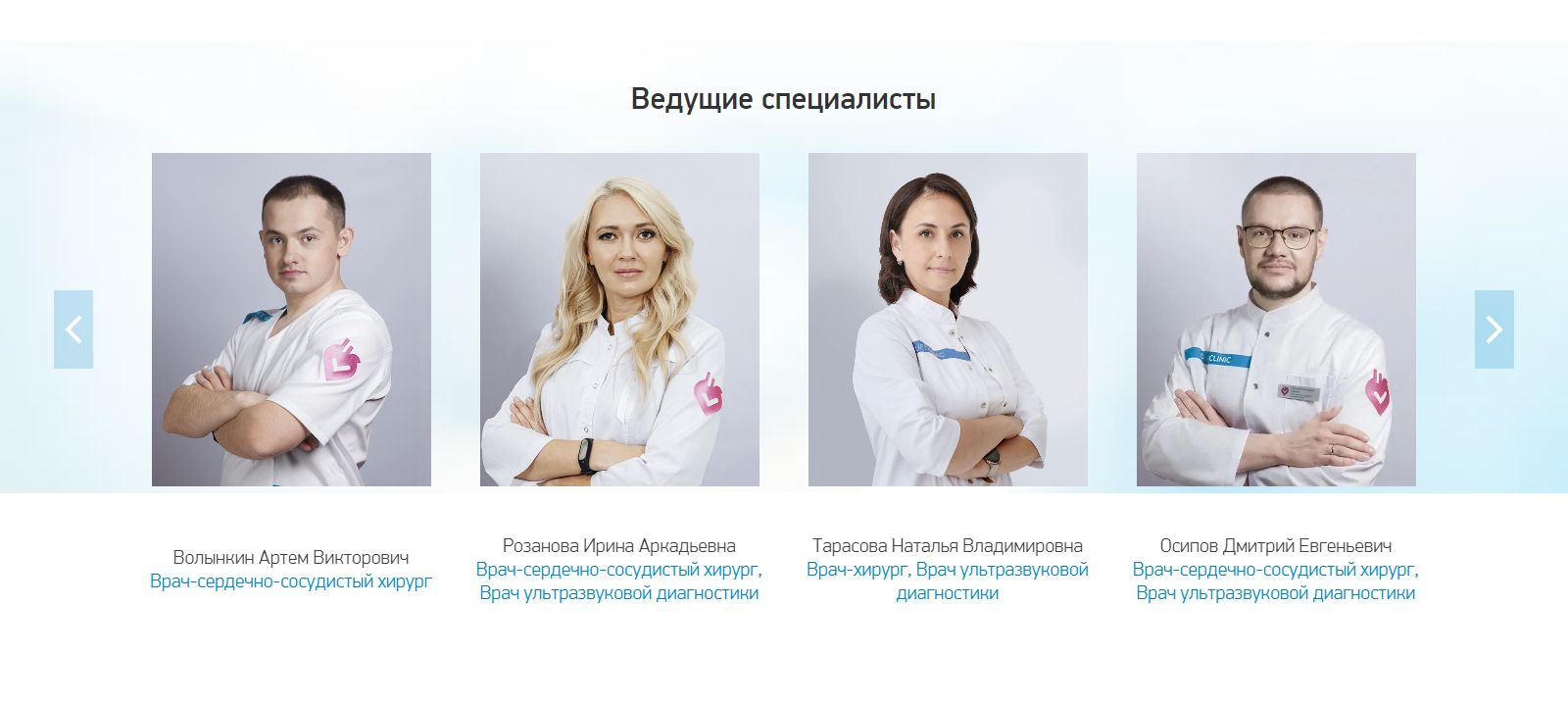
We identified pages with unique content that met search engine requirements — these were transferred to the new website. The rest of the texts were either discarded or completely rewritten by our copywriters.
The «Prices» section was completely updated. We removed outdated and empty pages, highlighted priority services, and scheduled SEO work for them.
Before launching the new website, we carried out basic optimization in several areas. We collected semantic core data and aligned it with the client, created tasks for copywriters, and compiled LSI keywords and user questions.
Using LSI-based copywriting, we addressed all user concerns: how to take the test, receive and interpret results, and what rules apply when returning to work or traveling abroad.
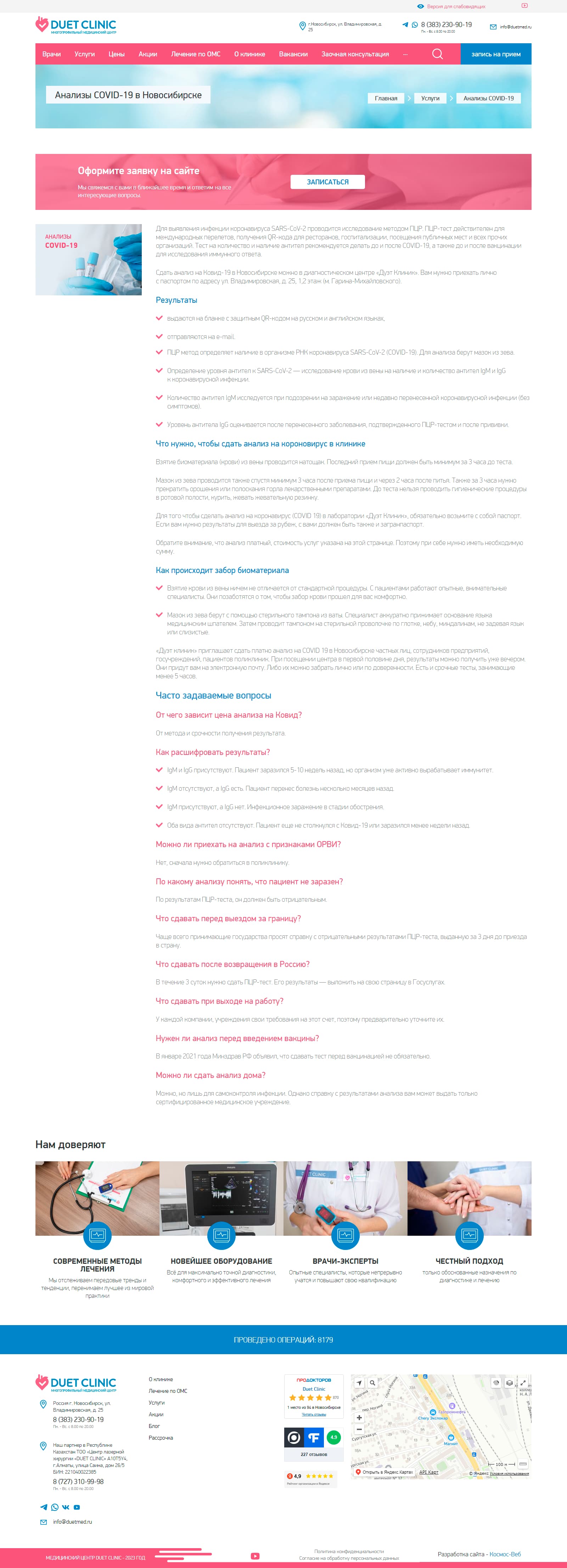
After the launch and reindexing, some keywords immediately reached top positions:
- TOP 1 — 31 keywords;
- TOP 10 — 81 keywords;
- TOP 30 — 114 keywords.
A month later, the number of ranking keywords increased:
- TOP 1 — 39 keywords;
- TOP 10 — 101 keywords;
- TOP 30 — 151 keywords.
Shares in the TOP 10 for basic optimization queries after the launch of the website.
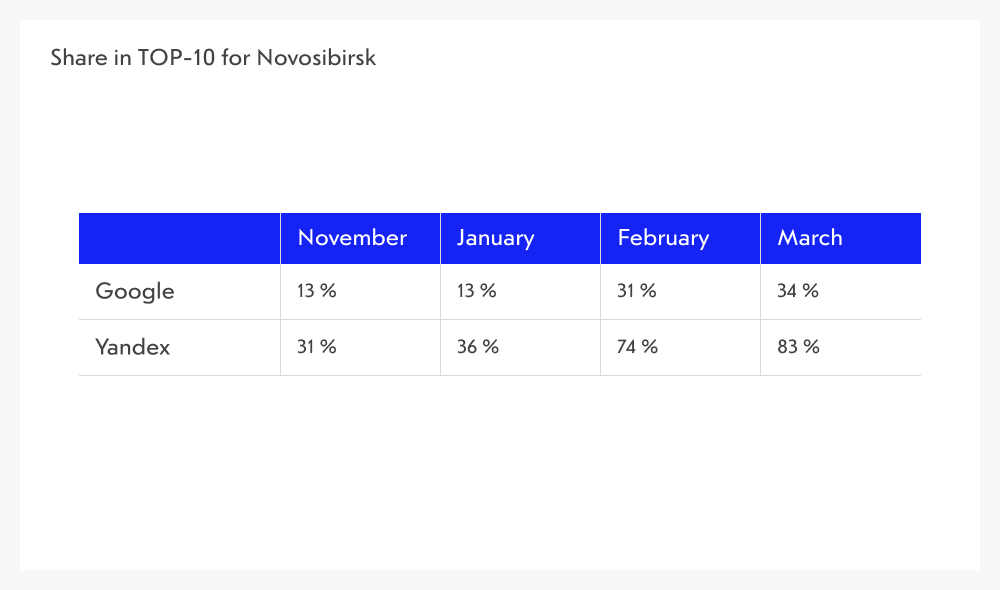
Thanks to the coordinated efforts of the web production and marketing departments, right after the basic optimization, the share in the TOP-10 results on Yandex for many new directions was higher than expected:
- Ultrasound of upper limb veins — 100%;
- Ultrasound of the child’s heart — 93%;
- Transesophageal echocardiography (TEE) — 82%.
The client then selected directions for further promotion by rankings. Additionally, there were areas where pages were created and optimized monthly before starting to promote them by position.
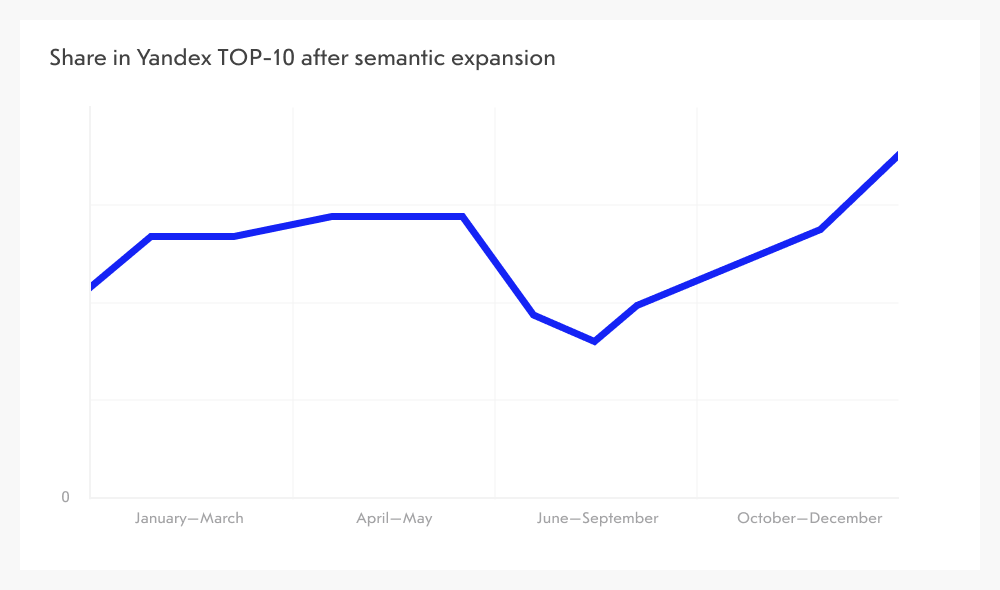
Naturally, the overall share in the TOP 10 decreased with the advent of new directions. However, as the new directions began to rank, the overall performance showed positive growth and maintained an upward trajectory.
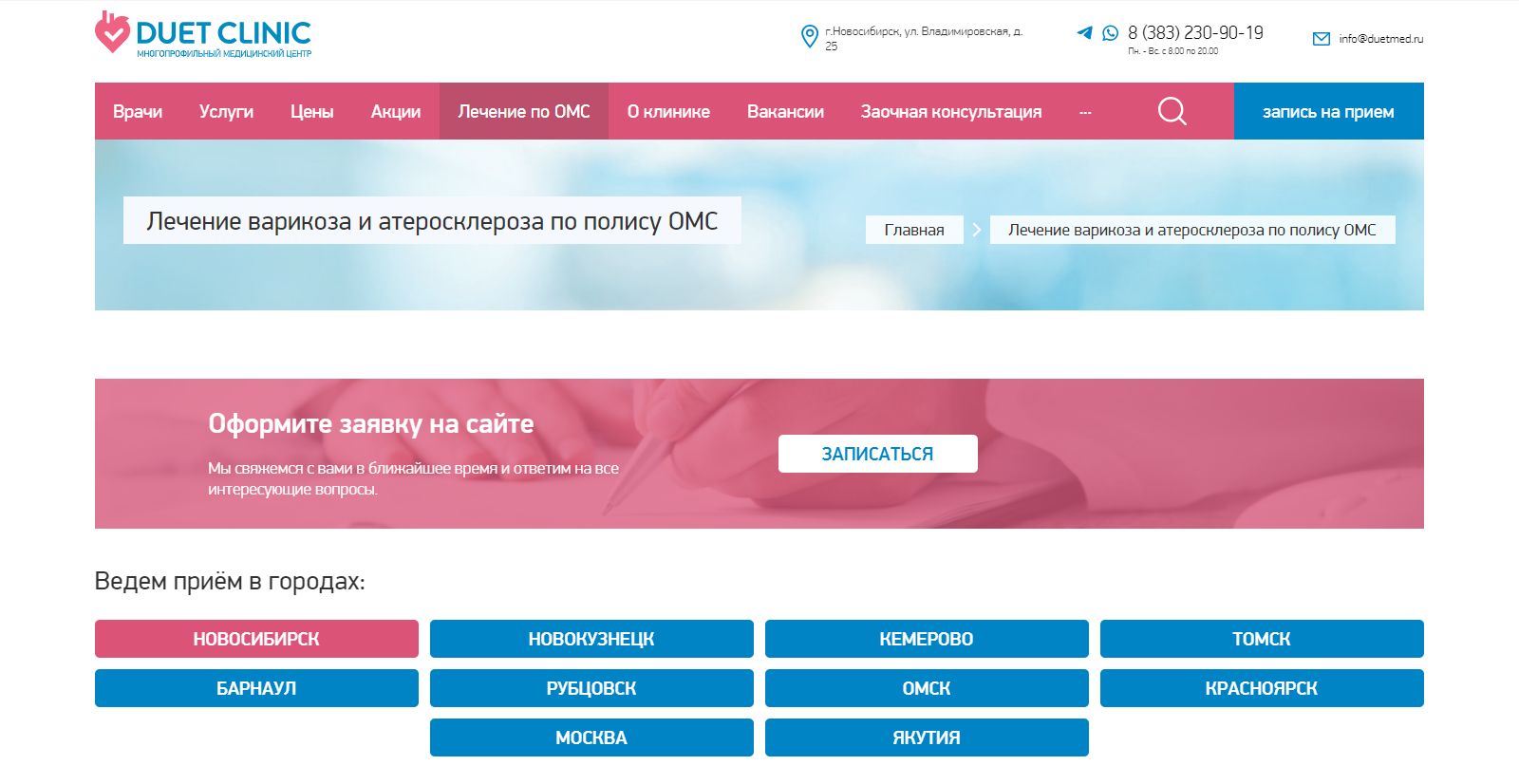
We analyzed the situation and decided that the best solution would be to create regional subsections within the service page. Each subsection would have unique content tailored for each city.
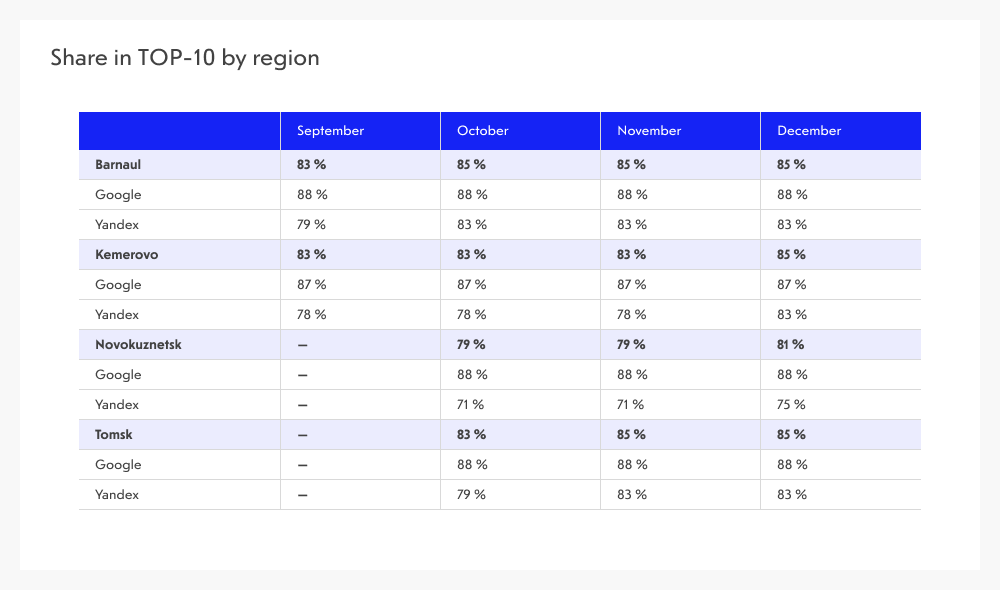
Our experts divided the new regions into smaller groups and began the promotion in stages. The optimization of pages for each new city was based on the results of the previous stage. This approach is called iterative, and it allows us to distribute the budget over time in digital marketing while avoiding significant mistakes.
- Work with the website structure;
- Microdata Schema.org;
- Promotion of over 50 services for Novosibirsk;
- Promotion of the ’Treatment under OMC’ service in 10 regions;
- Implementation of Canonical;
- Focus on refining the structure and the content itself;
- Internal linking within blog articles to service pages and between service pages;
- External optimization.
We selected the most promising areas for promotion. Those that were better suited for search engine optimization.
At the same time as SEO, we launched contextual advertising to get the maximum number of leads.
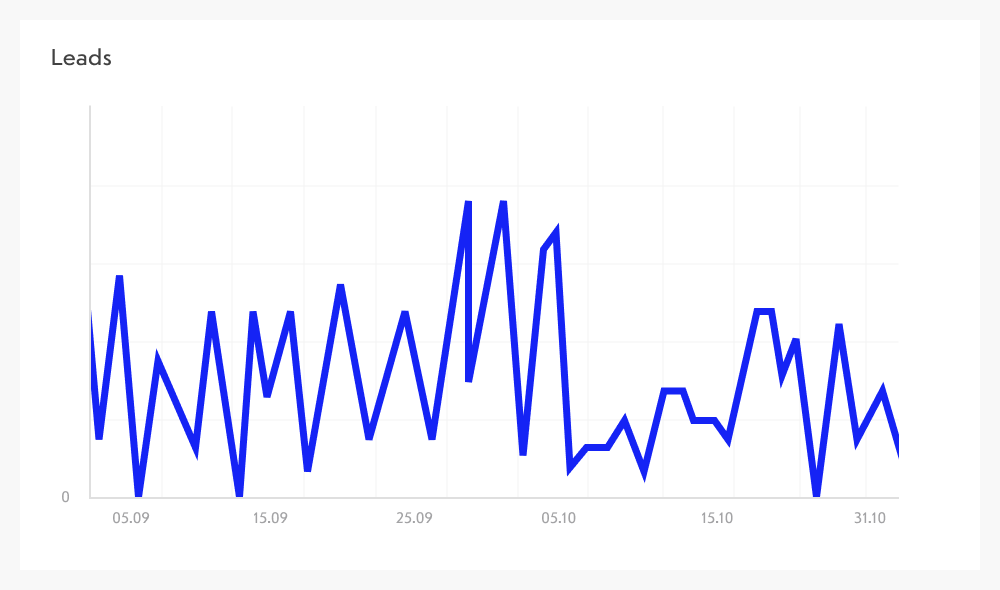
Work began in September. Call tracking was immediately connected. Calls started coming in from day one.
We connected a separate static number for placement in Yandex Maps.
Thanks to call tracking, we reduced the number of unsuccessful calls.
The main focus was on varicose vein treatment, but we expanded the number of services and regions.

This is due to the shutdown of Google Ads, where we were getting leads at a good price. Once Google left, most advertisers shifted to Yandex, and the market became overheated.
We quickly adapted our processes for contextual advertising with a focus on Yandex. As a result, the metrics normalized. In Google, we continued working on SEO.
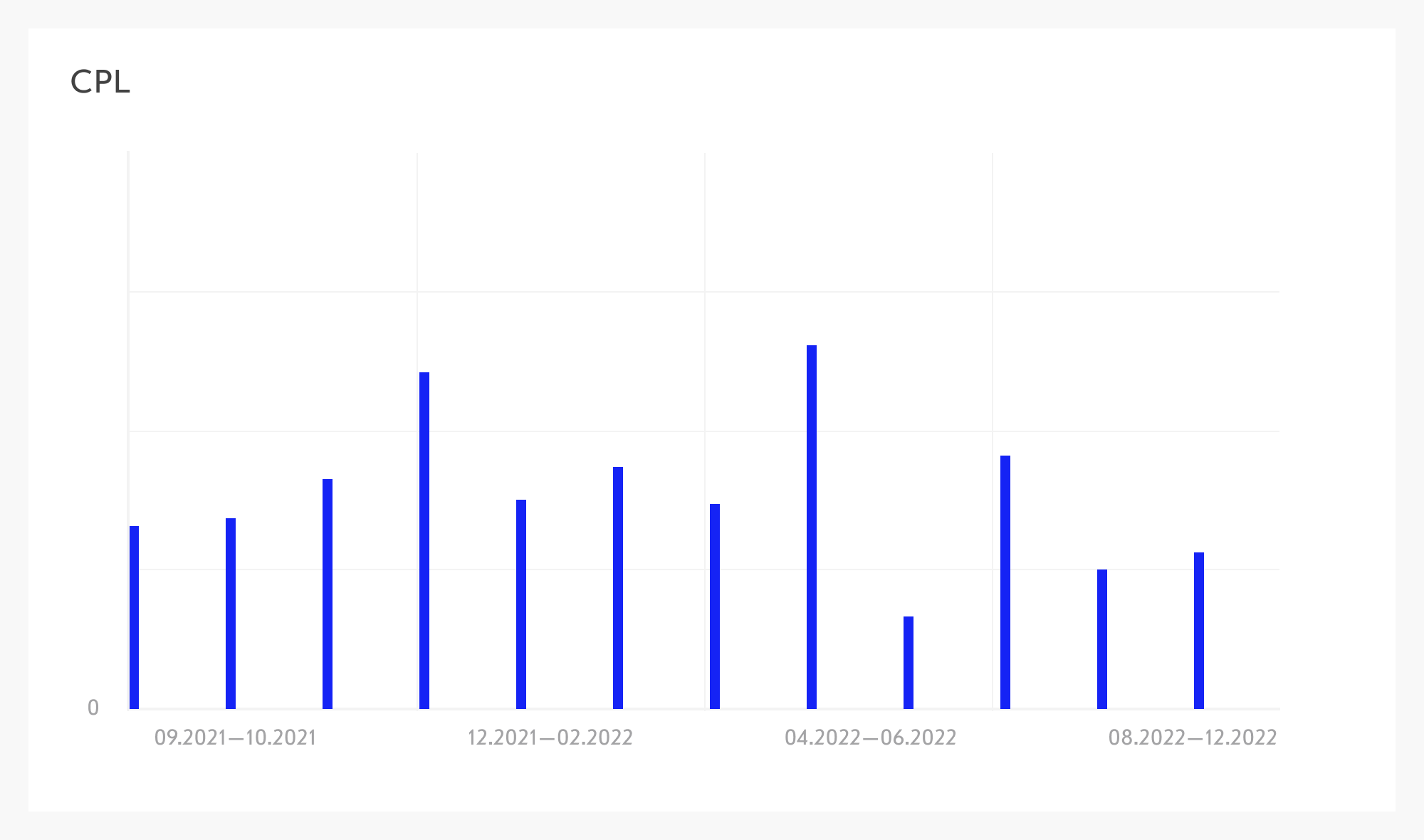
- Video extensions and carousel in the Yandex Advertising Network;
- Banner ads in search;
- Keyword-based search;
- Segmentation of high-frequency and low-frequency queries;
- Hyperlocal targeting (within a 5 km radius of the clinic);
- Use of promotional offers;
- Retargeting those who visited for consultation but did not undergo the procedure;
- Look-alike targeting for those who had the procedure in the last 4 months;
- ’Campaign Master’ for the phlebology landing page.